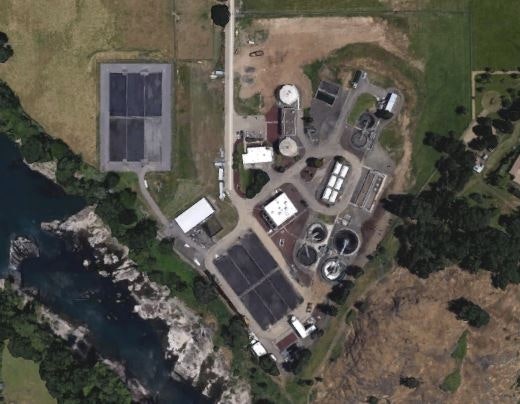Sewer Collection and Treatment
Collection
The Sanitary Division of Green Area Water & Sanitary Authority (GAWSA) provides sanitary sewage service to the Green urban unincorporated area (UUA) encompassing 2,355 acres in Douglas County Oregon.
GAWSA currently owns and operates three major sanitary lift stations, approximately 33 miles of gravity sewer ranging in diameter from 6-inches to 24-inches, 808 manholes, and 2.9 miles of force main ranging in size from 2-inches to 12-inches. GAWSA also maintains five septic tank effluent pumping (STEP) systems including one commercial STEP system and four residential STEP systems. Within the UUA, GAWSA collects wastewater from 2,840 customers including residential, commercial, light and heavy industrial, mobile home parks, and institutions. This wastewater is then conveyed to the jointly owned Winston-Green Regional Wastewater Treatment Facility.
The Sanitary Division’s goal is to provide uninterrupted sanitary sewer service to the Green Area through inflow and infiltration management, facility maintenance, installation inspection, geographic information system mapping, closed-circuit television pipe inspections, fiscally minded repair, and rehabilitation of aging infrastructure to protect the environmental and public health.
Treatment
The Winston-Green Wastewater Treatment Facility (W-GWWTF) is jointly owned and operated by Green Area Water & Sanitary Authority and the City of Winston. The Facility receives a dry weather average flow of 1.2 million gallons per day from the two communities’ collection and conveyance systems. This influent wastewater is pumped through a pretreatment grit removal and screening process to capture heavy or suspended materials.
The next section of the facility treatment process separates materials from the liquids that naturally float or settle, commonly referred to as primary treatment.
The wastewater then flows to the facility’s secondary treatment. Utilizing a biological nutrient removal process known as activated sludge, oxygen is introduced to the liquid by aeration, promoting the growth of organic material consuming organisms. The W-GWWTF is one of two plants in the state that can also treat with rotating biological contactors for higher flows. Aerated wastewater, rich in organisms and materials, flows to secondary clarifiers to remove the majority of the dissolved and suspended solids from the wastewater.
These removed solids are then reduced with an anerobic digester and gravity belt thickener to treat approximately 3.5 million gallons of solids per year. These solids, after processed, will equate to roughly 1 million gallons of tested Class A and B biosolids that get land-applied to fields throughout the valley for mainly hay crop fertilization.
The remaining processed and treated wastewater then flows through multi-media rapid sand filtration and chlorination for disinfection. A final dechlorination of the effluent protects fish and wildlife before leaving the facility.
The W-GWWTF has a highly qualified, diligent staff of specialists, dedicated to the operation and maintenance of facility buildings, assets, and treatment equipment, protecting the investment in our communities’ public health and environmental security. Additionally, W-GWWTF utilizes an onsite, extensive laboratory to ensure the quality of the effluent leaving the facility consistently meets the discharge permit set by the Department of Environmental Quality.

